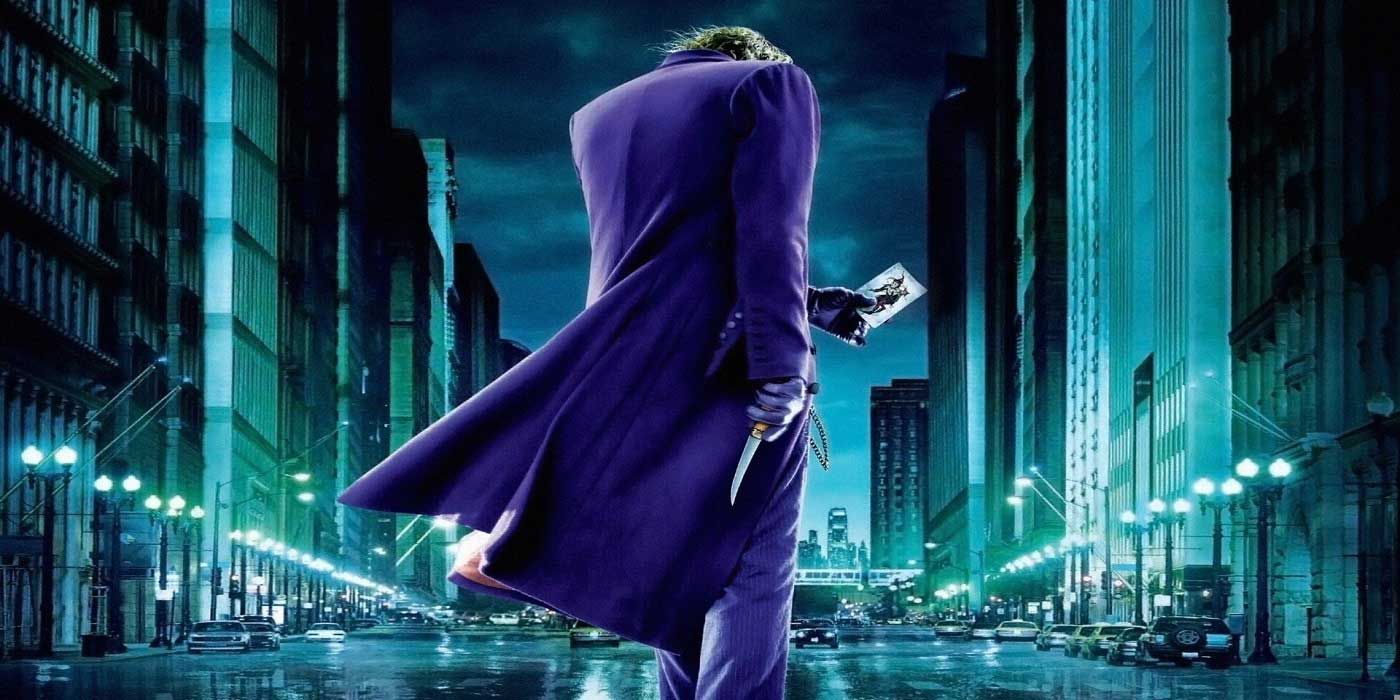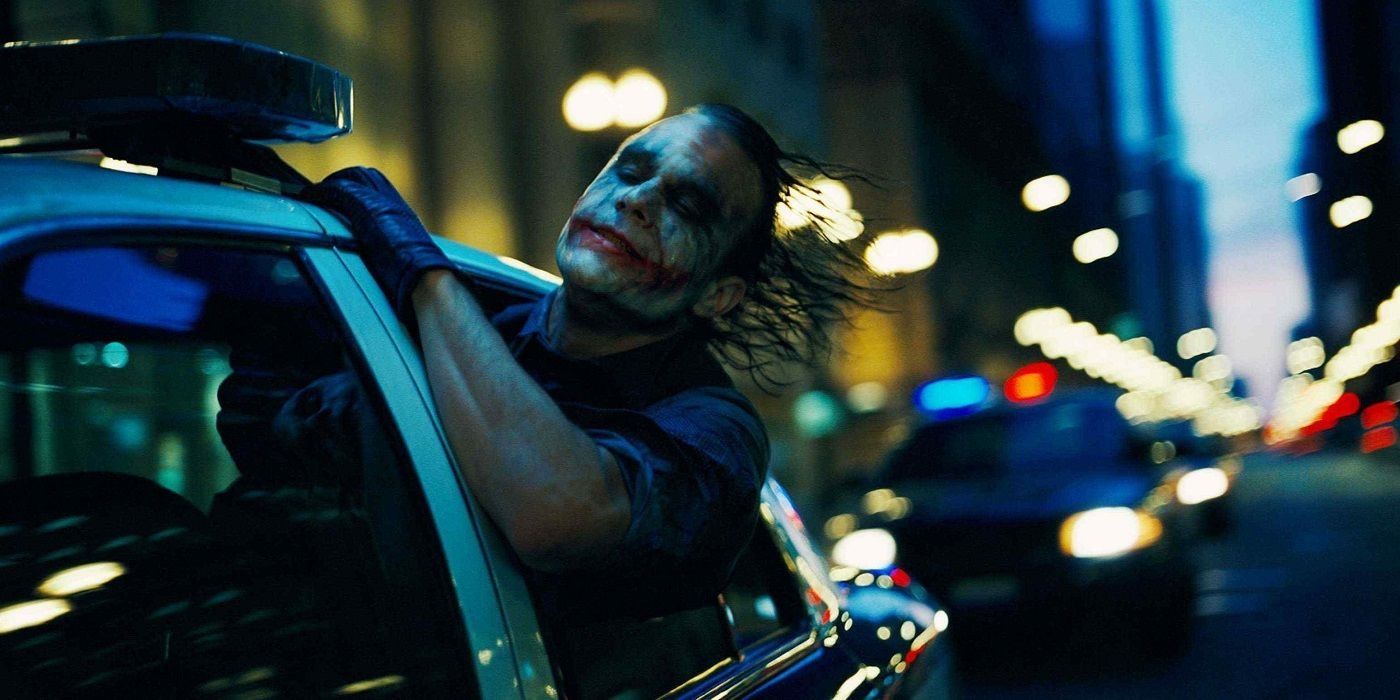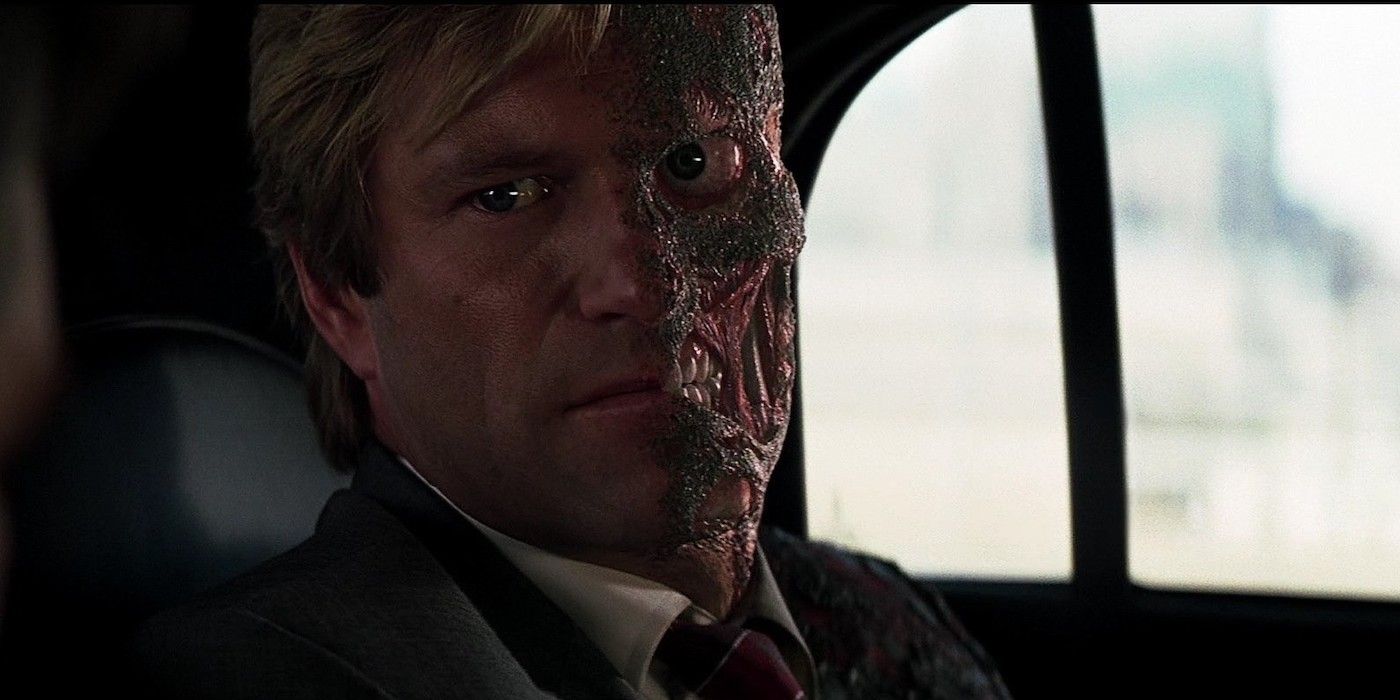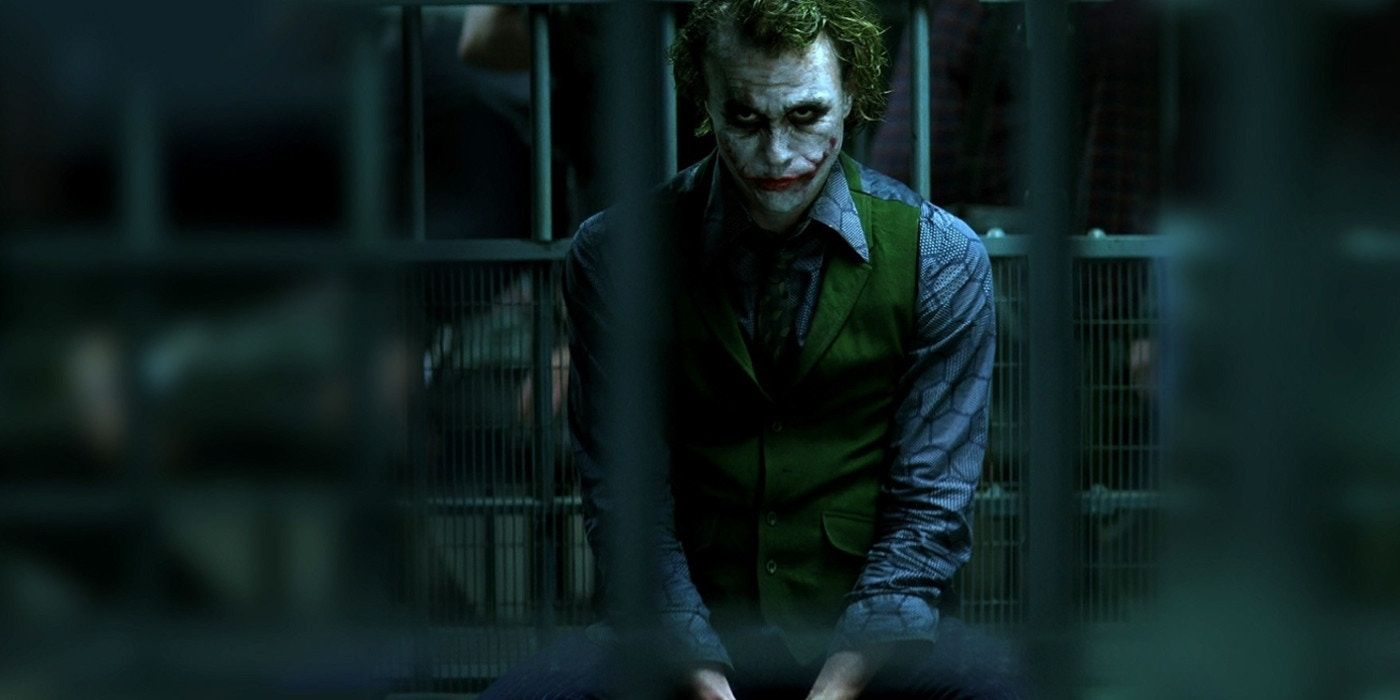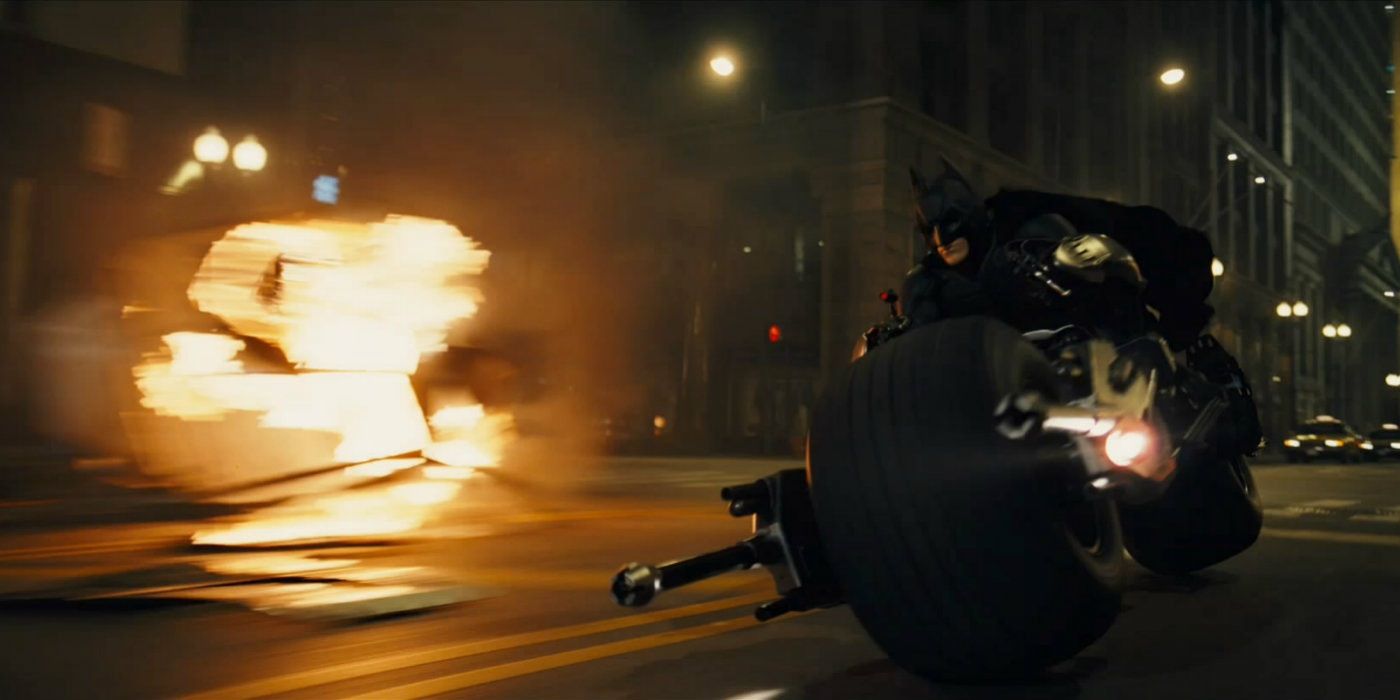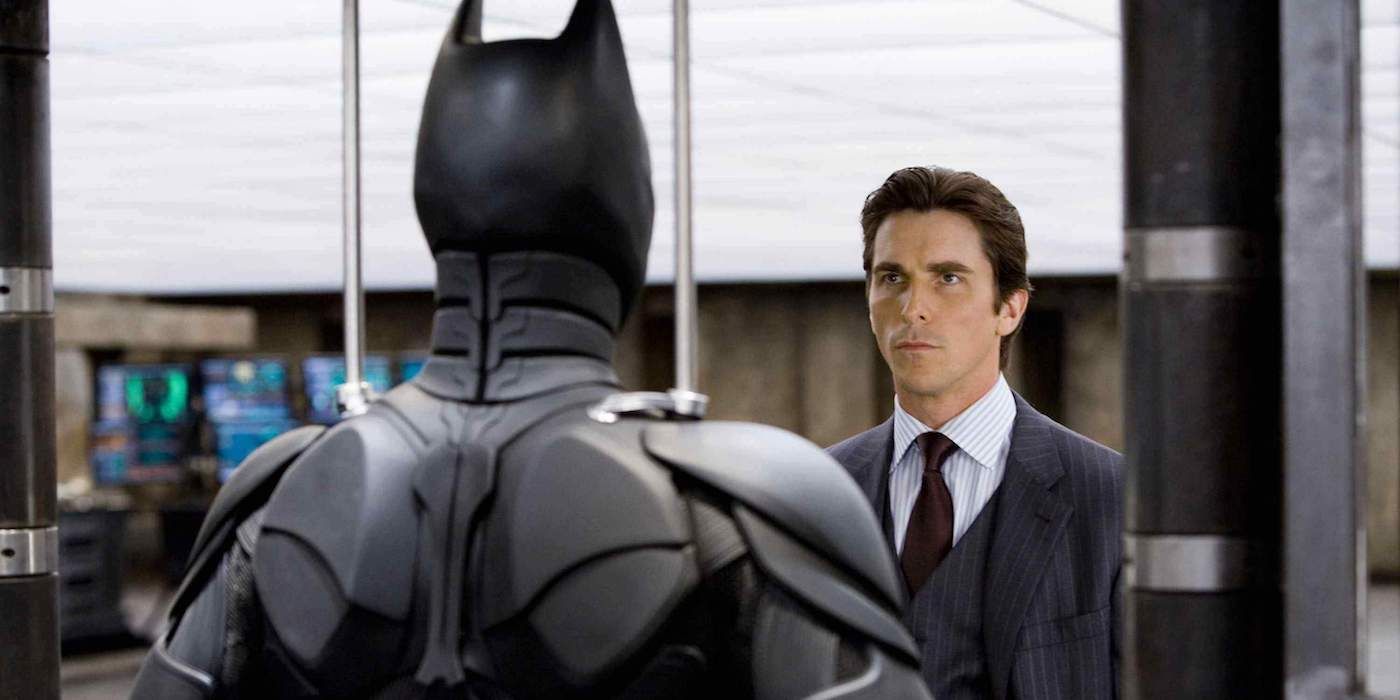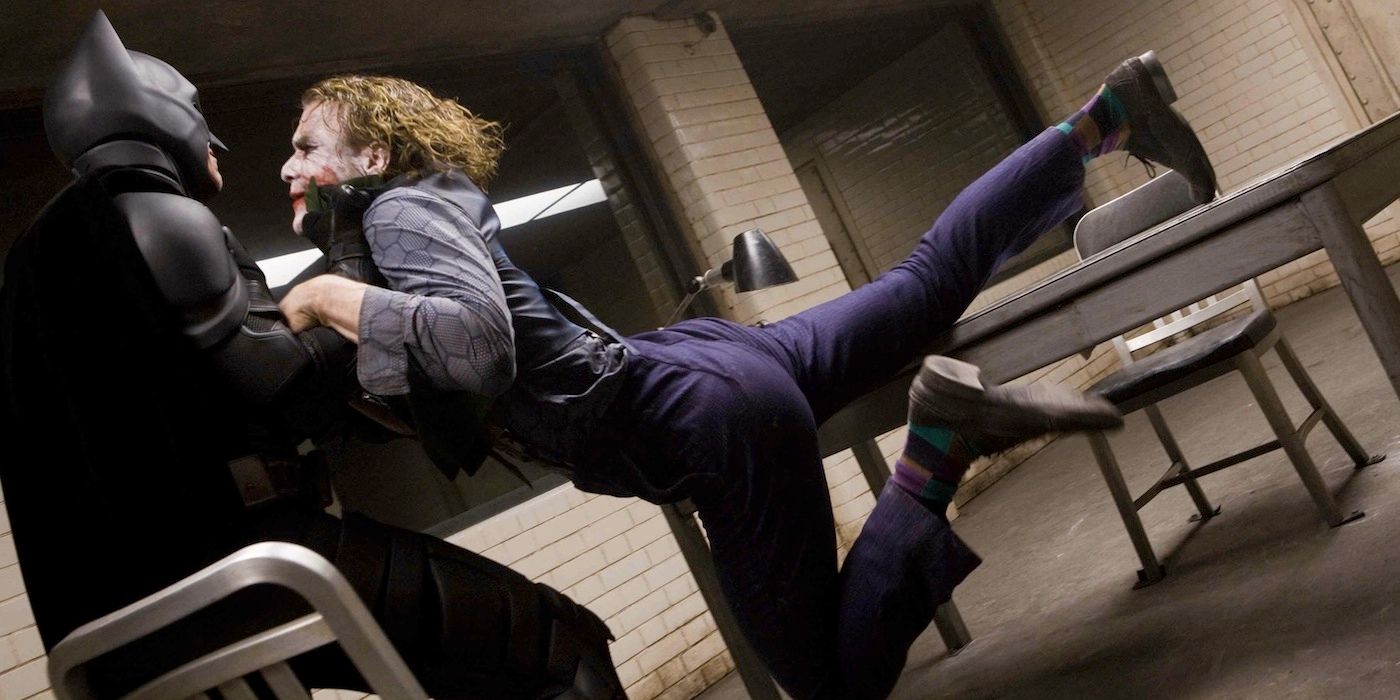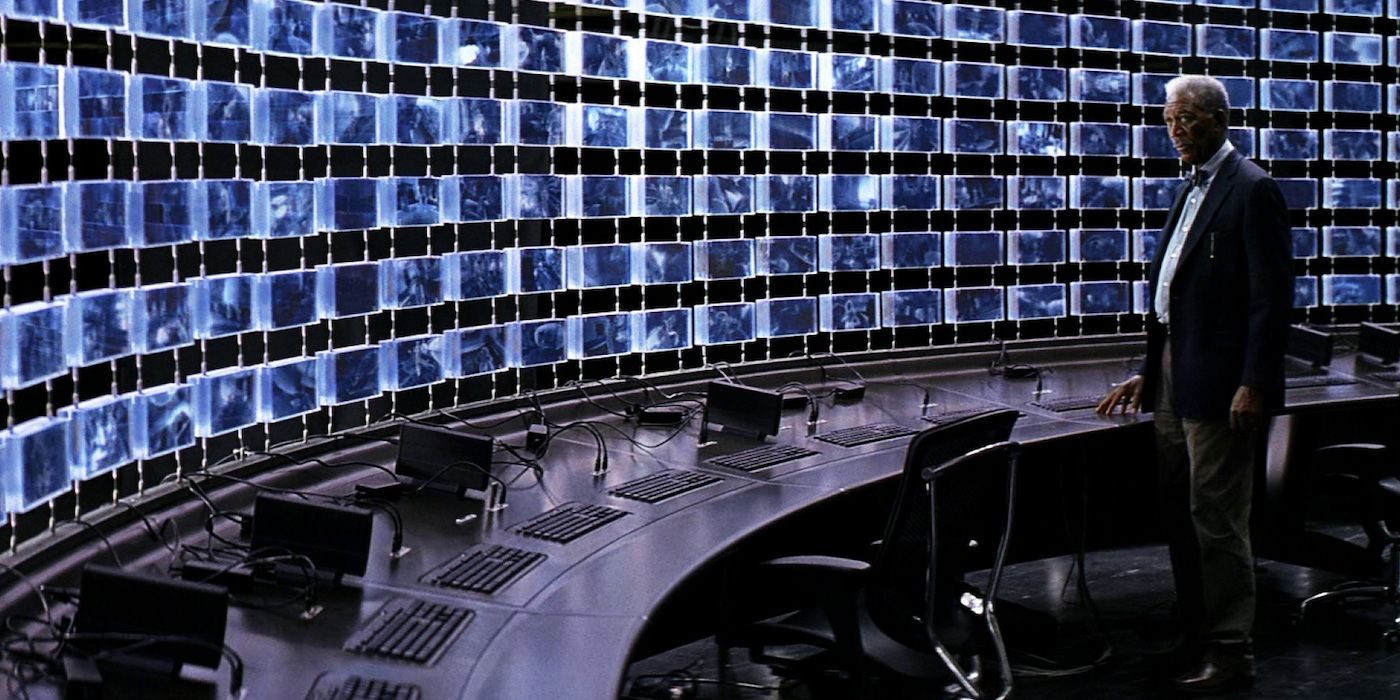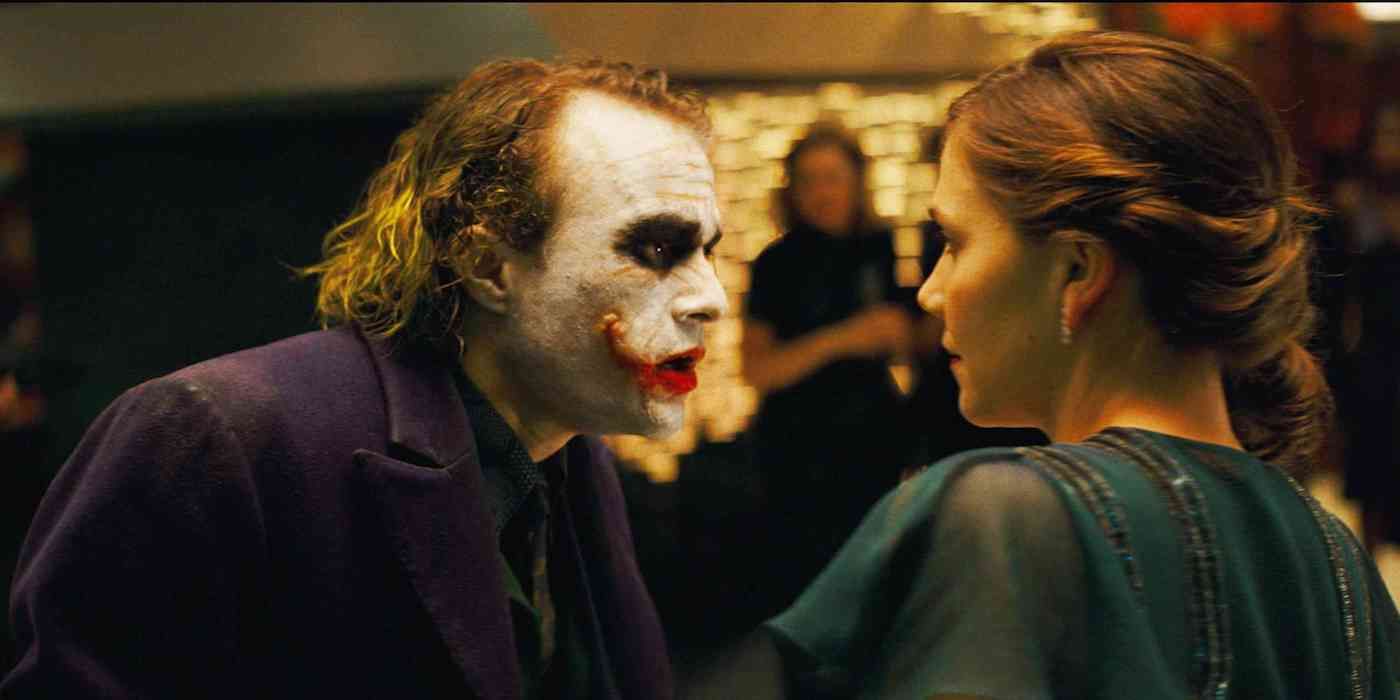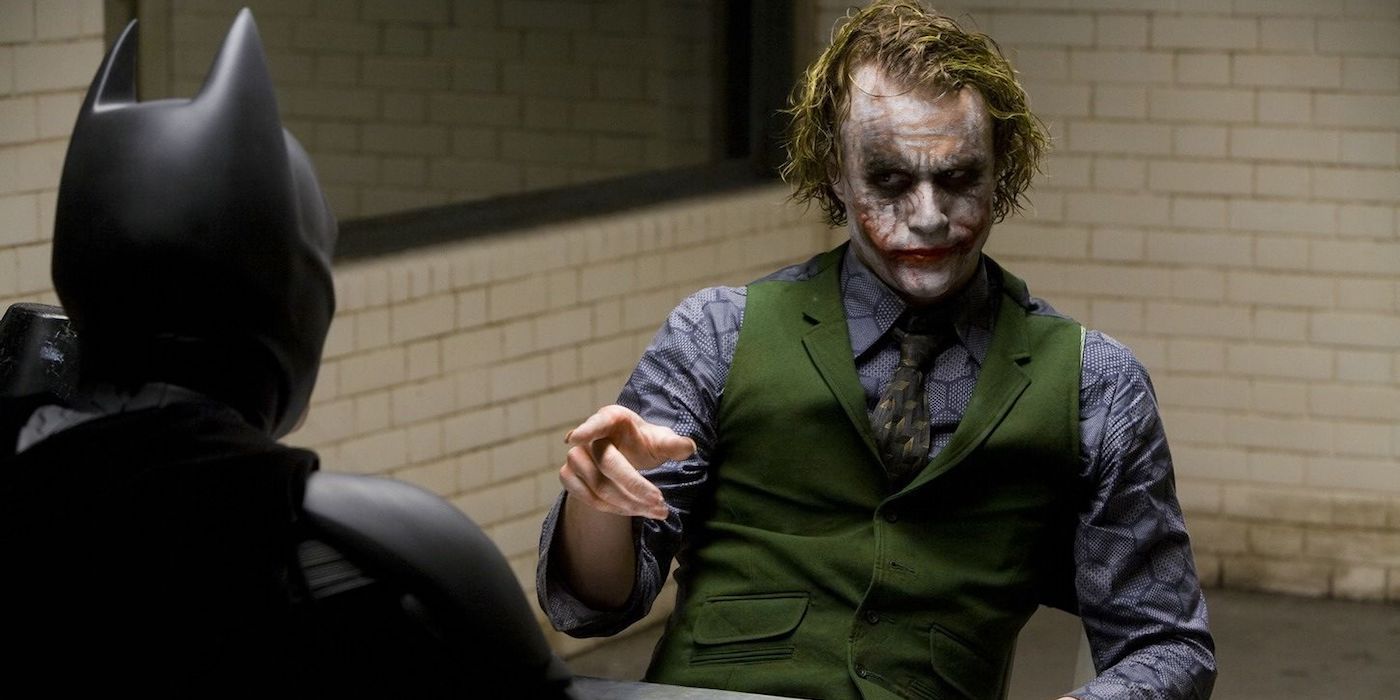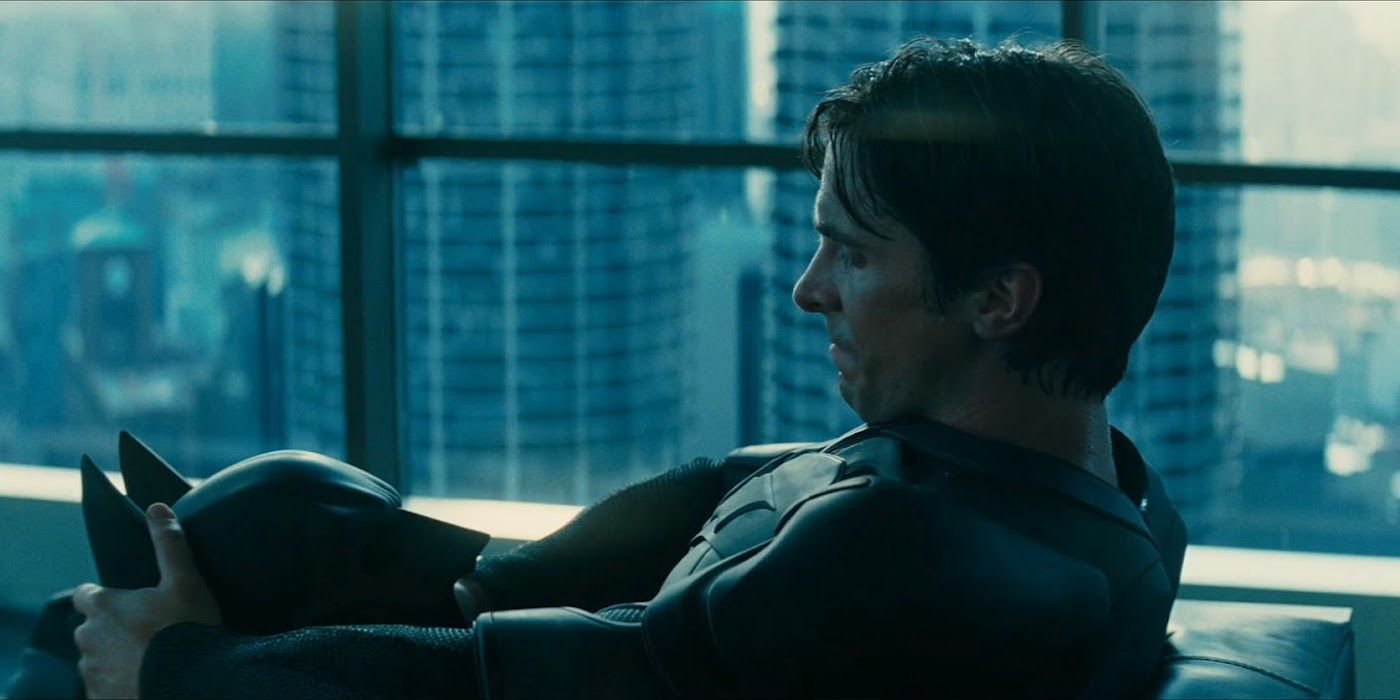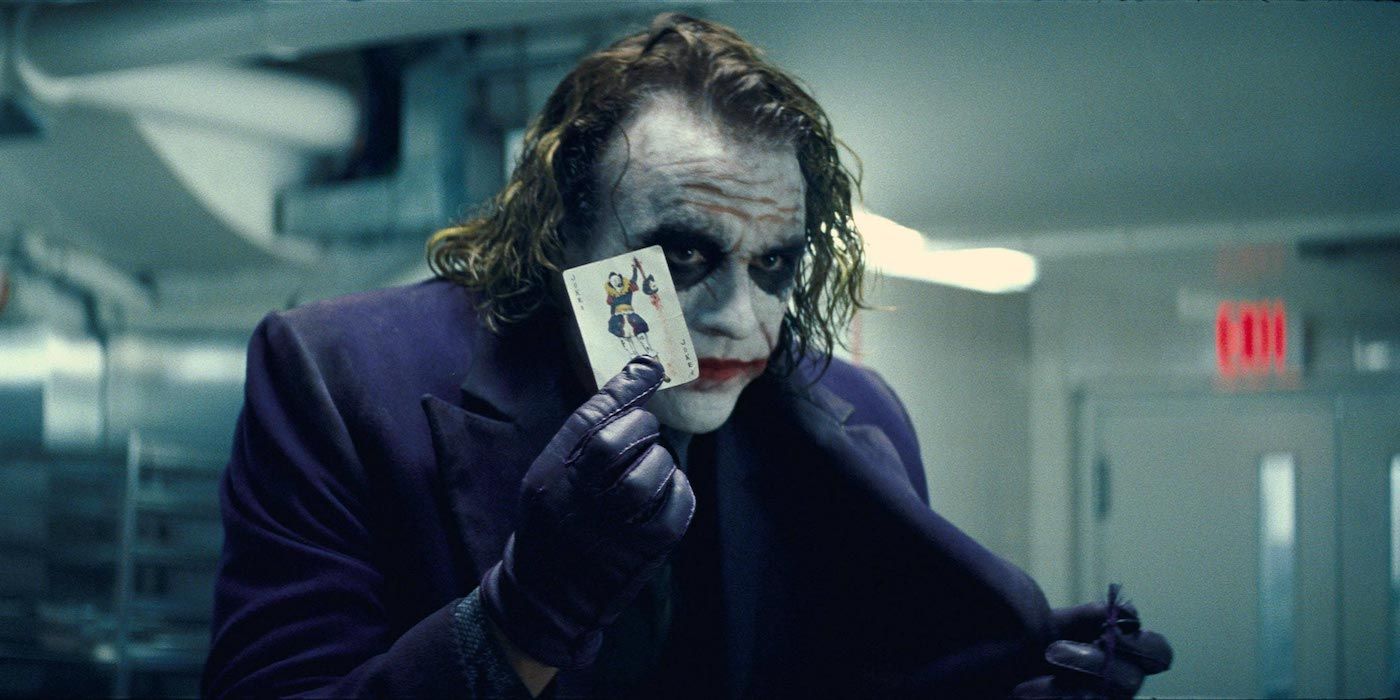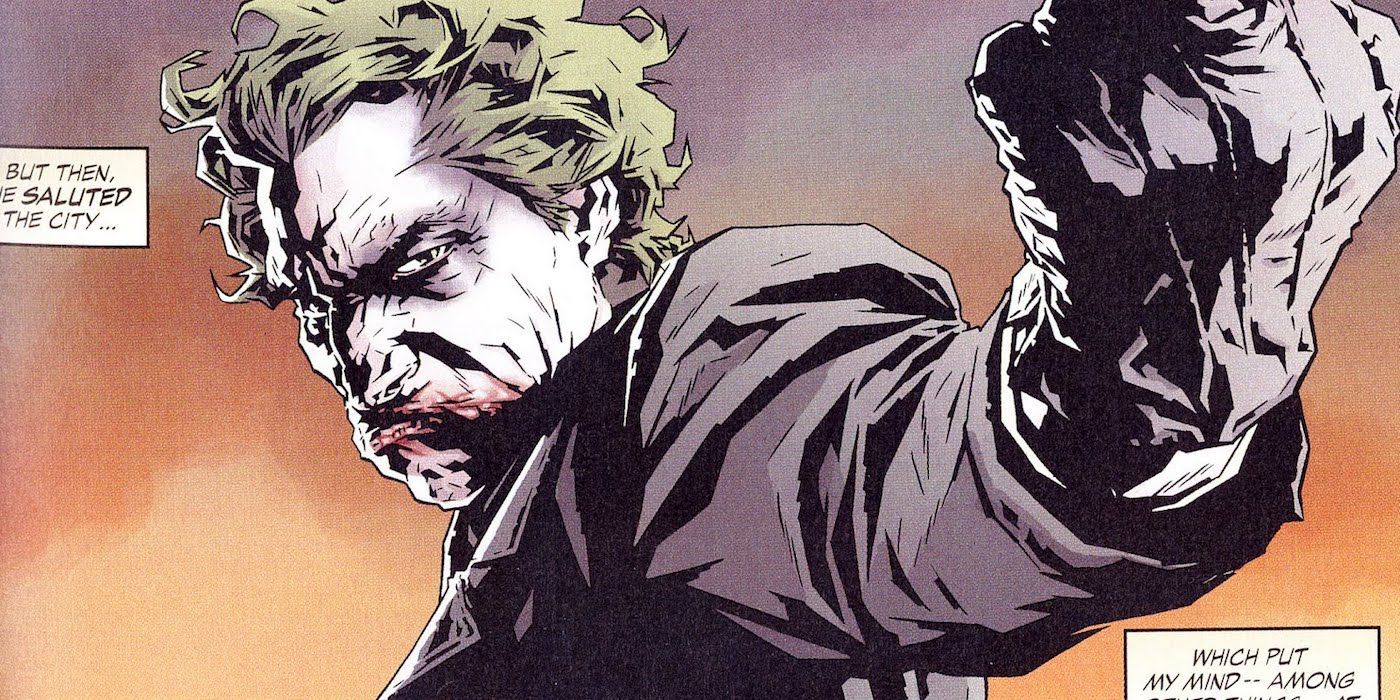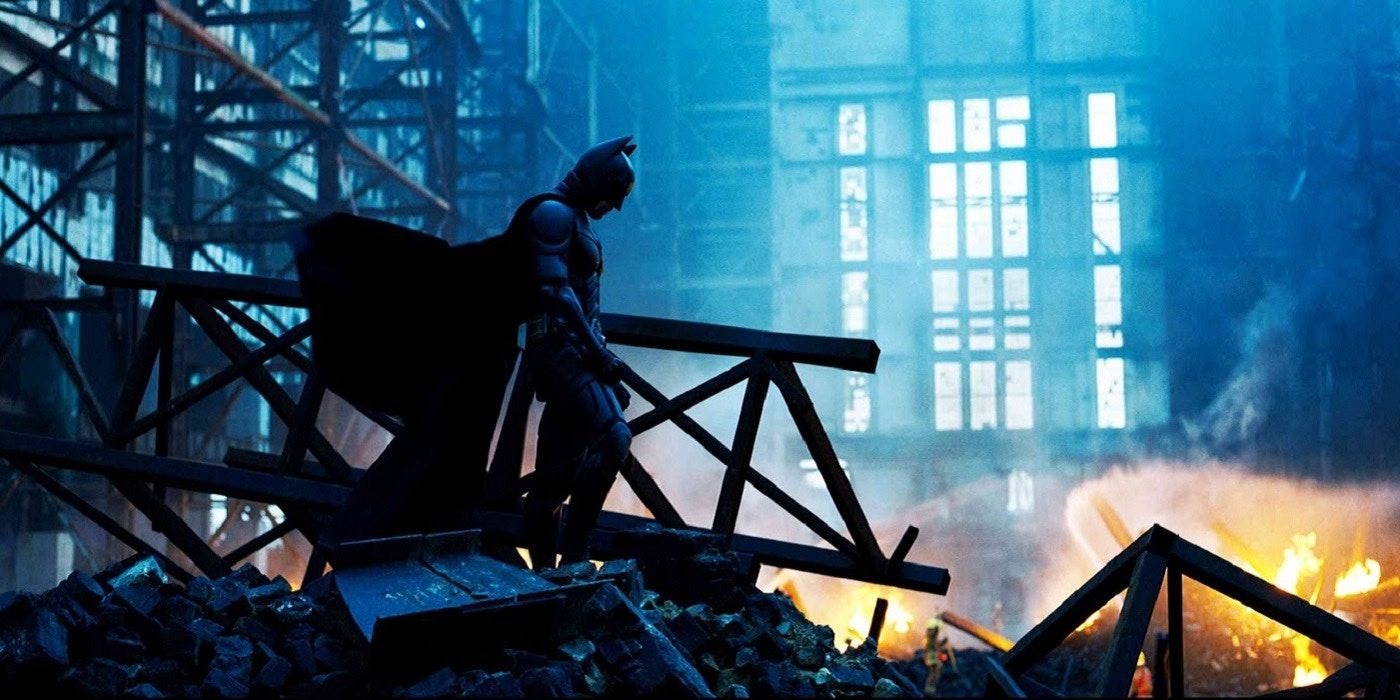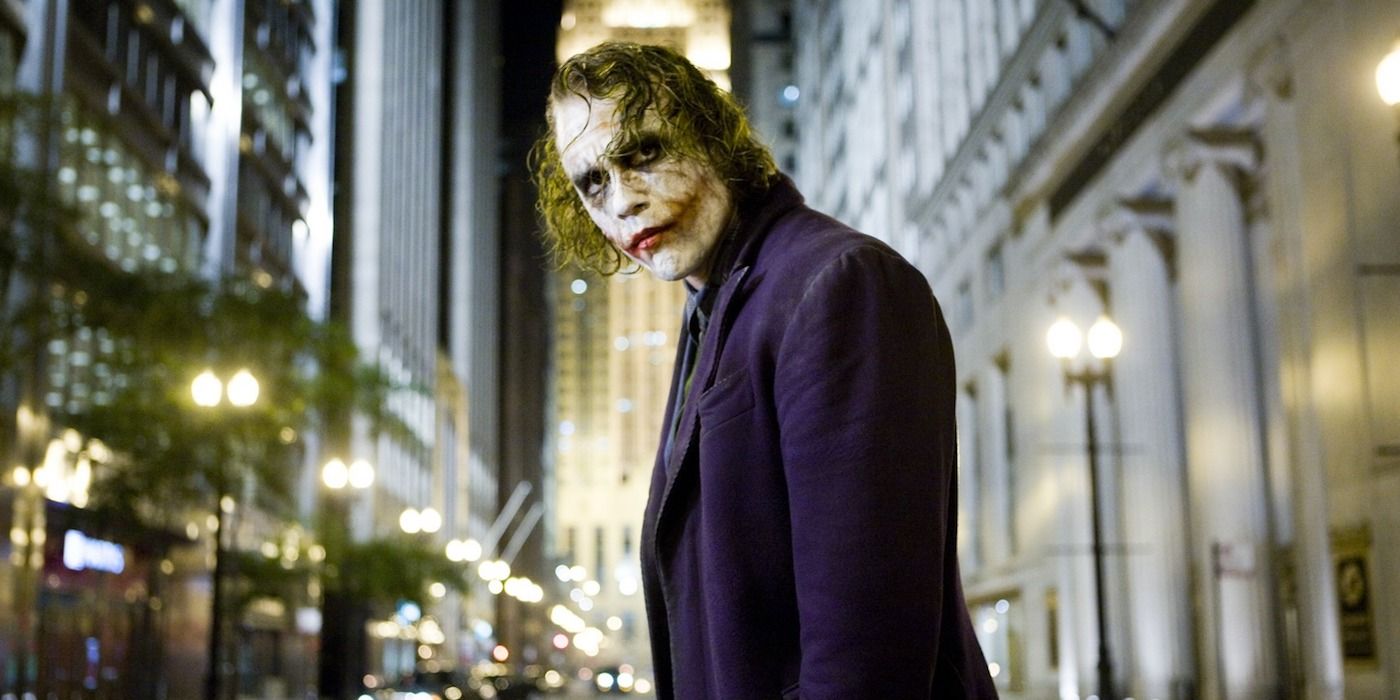Christopher Nolan changed comic book movies forever with his Batman trilogy, veering away from the campy nature of this particular franchise, and reinventing in a realistic, gritty and grounded manner. His stories were critically acclaimed, as well as huge box office draws, with Christian Bale constantly praised for his portrayal of Bruce Wayne (continuing their frequent collaboration, which included movies like "The Machinist" and "The Prestige").
RELATED: Batman Begins: 15 Reasons It Is The Best
"The Dark Knight" is seen as the crowning jewel of Nolan's trilogy, fueled by the remarkable performance of Heath Ledger as the Joker. Sadly, Ledger passed away just before it premiered in 2008, but left a lasting impression in a role that stole the show, not just because of his death, but because of how he personified chaos. With so many key ingredients, CBR decided to look at 15 reasons why this film was the best Batman movie of all time!
SPOILER WARNING: Major spoilers ahead for Christopher Nolan's Batman trilogy
15 MIND GAMES
This movie hinged on the unpredictable mind games of the Joker which undoubtedly set it, as well as him as a villain, apart from other comic book movies. He appeared rash and rabid at times, but throughout the movie everything he accomplished was down to his cold and calculating nature. Nothing was ever obvious with the schemes he plotted against Gotham. Every move was carefully planned, which often left Batman in the dark (pun intended).
From tricking Batman with Harvey Dent and Rachel Dawes, to poisoning Commissioner Loeb, to killing vigilante pretenders, judges and mob bosses, to blowing up hospitals, to a cerebral final act involving boats with inmates and citizens given the choice to kill each other to survive, no one knew what his end-game truly was. Batman resorted to invasive measures to catch him because the clown-gangster always seemed a few steps ahead. His reign of chaos was often out of reach and anything but random, as seen with how he eventually broke Dent's moral compass.
14 A SYMPATHETIC VILLAIN
"Batman: The Animated Series" painted Dent as a tortured soul (as did most cartoons), which was better received than, say, Billy Dee Williams ("Batman") or Tommy Lee Jones ("Batman Forever"), who both arguably brought too much levity to the character(s). This movie, though, got the balance and overall tone down right, as it showed Dent as someone who tried to fight for justice, but ended up engulfed by a failing legal system. It also took his love away, which made his villainous turn sympathetic, tragic and relatable.
Aaron Eckhart oozed charisma and implemented an apt duality, being a white knight as a lawyer, but then a dark one when he lost his way due to Joker's plotting. "You either die a hero or live long enough to see yourself become the villain" -- this adage, said by Dent, embodied the movie's end as his descent was fueled by Rachel's death and the corrupt cops he felt let her down in the process. Dent's story was one of unabashed heartache, which led to Batman taking a fall as a symbol to maintain the lawyer's legacy and crusade for justice.
13 MANIA
Nolan smartly placed his eggs in a single basket and focused (mostly) on one villain, which appears to be the case whenever filmmakers deal with Joker. Burton did it in his original movie (through Jack Nicholson), although "Batman Returns" properly balanced Catwoman and Penguin. The Schumacher franchise, however, mucked up "Batman Forever" with Two-Face and Riddler; while "Batman and Robin" bombed with Mr. Freeze and Poison Ivy, highlighting that too many villains could complicate things.
The director played to his strength because he knew this Joker had so much depth, and devoted time to properly fleshing him out. "Batman Begins" did do Ra's al Ghul and Scarecrow as a neat one-two punch, but Nolan approached Joker like a boxing match that went into the late rounds. We never got his origins in the movie but that was the beauty of it -- Joker was just a force that came out of nowhere, wrecking Gotham to bring it "a better class of criminal." Joker transcended the typical mafia boss or goon, making him the direct opposite of what Batman stood for.
12 THE BATPOD
The Batpod (a Batcycle) blew our minds when we saw it ejected from a stalling Tumbler (Nolan's version of the Batmobile). It showed that Batman was ready to push the technological envelope and go for something that was strategically tactical for speedy car chases and eluding cops. It was so unconventional, being steered by the shoulders instead of hands, with the rider's arms protected by shields, and fans thoroughly enjoyed seeing Nolan keep it for the sequel.
In this movie, we got our first look at its amazing arsenal, boasting grappling hooks, cannons and machine guns, with the highlight being how it tripped that humungous trailer Joker was in. The way it moved and of course, the fluidity it showed while gliding off walls, all of which left us in awe. The wheels rolled against their normal axes, for added stability in sharp turns or other maneuvers, which created instant changes in direction. The chassis also elongated, allowing the rider to pass under low-hanging obstacles, seen when Batman ducked under Joker's trailer. The Batpod was a prime example of Batman's innovation and thoughtful engineering like in the books.
11 THE MYTH, NOT THE MAN
"Batman Begins" was all about building Bruce up to the point where he represented justice as a symbol. This movie did the opposite and was about deconstructing that symbol. The predecessor was the story of his human side, but "The Dark Knight" was about breaking down the myth and really focusing on Batman. It was a good move to steer clear of the philanthropic playboy lifestyle and corporate boardroom drama, so that we could see Batman struggling morally with Joker.
This came full circle in "The Dark Knight Rises" where we saw the rebuilding of both the man and hero, and that's why "TDK" touched on Bruce's human element only when it came to loving Rachel. This was evident where Batman lost his cool in the interrogation scene with Joker, and also when he had to save Rachel after being thrown out a window, showing the dichotomy and inner-turmoil he was enduring, in that he wanted to go back to being Bruce, but simply couldn't. This movie reiterated that Bruce left Gotham, and never came back after training with Ra's.
10 BATMAN TO THE LIMIT
Batman was at a loss when it came to tracking Joker, watching him basically hold Gotham hostage. Even the criminals weren't safe, so when he approached them and found they too were scared of the Clown Prince of Crime, he knew he needed unconventional measures. Jim Gordon faking his death helped apprehend Joker, but it was all about that interrogation scene that saw Batman beat Joker mercilessly after finding out he took Harvey and Rachel hostage.
Batman then used illegal spying and surveillance means to locate Joker and he almost came close to killing him after that other hostage scenario with the ships filled with prisoners, and also the citizens. Joker kept taunting him that he would have to break his one rule throughout the movie, but Batman resisted and didn't kill him, which was the villain's main goal. He was all about seeing the Gotham Knight fall from grace, which led to him focusing on Dent. For the first time, we actually saw Batman cut it close to losing control, which helped him quit his vigilante life.
9 FATHERLY BONDS
Michael Caine's Alfred was on-point as usual, helping Batman track and try to combat Joker, while protecting Bruce from the heartbreak of Rachel moving on. Watching him burn the letter where she admitted she wanted to marry Dent was truly heartbreaking, as it showed how much he wanted to shield Bruce as a son. He was willing to take hits for him, even if it could cost him their bond, which is how Nolan always shaped the butler to be.
Another powerful fatherly bond continued with Bruce's relationship to Lucius, who became more than just his supplier of gadgets. When Batman re-engineered Lucius' surveillance equipment to track Joker, it crossed the line and invaded people's privacy so that he could map Gotham City. Lucius quickly chastised him for this and said he wanted out of such desperate acts. He made sure to warn Bruce that he shouldn't lose himself in the monster Joker was trying to create. Both men stood up as paragons of virtue in Bruce's life.
8 FEARED NOT DEATH
Joker showed that everyone was on the table in terms of body count. "Batman Begins" was so coy in terms of eliminating Ra's and the League of Shadows, but this film explicitly went off the rails in terms of death. Rachel's was most shocking as we expected her to resolve her feelings for Bruce, but Joker's rampage also stretched to the Commissioner, judges and even threatened the mayor. As for the vigilante pretenders, they were hung high and dry.
These were very grim deaths but ones that reminded Batman just who he was dealing with. Even Alfred recognized this and kept warning Bruce about the danger he was facing, even creating. It got bleak at the end, too, with Dent's eventual death, foreshadowed by him holding Gordon's son hostage. It wasn't just the Joker who was toying with death, because apart from Dent, even Batman thought of killing in the film to save his people.
7 SUPERVILLAINS
It's not often that you see villains cowering in fear from someone other than the hero, but that's what Joker offered. He broke the concept of the mob and mafia, and made them bow to him. From ramming a guy's face into a pencil, to burning the mob's money, to taking out police stations to get informers, to attacking the Batman head-on, Joker truly went maniacal on Gotham. The criminals that weren't aligned with him quickly found themselves doing so as he made it clear everyone else was expendable.
His schemes were chilling because it didn't matter if you were a cop, an innocent, a prisoner on a boat or Batman himself -- everyone was fair game. The way he threw Rachel off a building, the way he fearlessly raided black-tie events, and how he sat waiting to show Batman that Gotham's people would destroy each other truly took villainy up a notch. Joker admitted that Batman "changed things forever," which is why he had to recalibrate the scale and up the ante in terms of Gotham's criminal element.
6 BATMAN/JOKER
This is the biggest and most intriguing rivalry in all of comics because they dance around each other with such contempt. What's even more interesting is how Batman manages to never kill him. In this movie, that trope was played up too, but Nolan did cut it close at times. Joker didn't even need to get personal with Bruce because he just knew that torturing Gotham was all he needed to do to weed Batman out. His quips showed he had no fear of the hero, and from the trailer scene to the end where Joker kicked him up while using dogs, it was all about chaos.
The interrogation scene summed things up where Joker admitted he didn't want to kill Batman anymore as he was now a factor in the villain's life, saying "you complete me" in a strange twist on a romantic cinematic line. In the finale, he also joked they were destined to do this forever, as an immovable object and an unstoppable force, even when the narcissistic villain was captured. Their dynamic was poetic yet violent, throwing back to when writers like Alan Moore and Jeph Loeb spun their takes on the duo.
5 CHRISTIAN BALE
Bale's emotional depth was one of the most resonating aspects of this movie. In fact, in the entire franchise, he gave a great impression as Bruce, hiding the truth about his heroics. But in this movie, we really saw him tormented and torn by being Batman and sacrificing his identity as a Wayne. That was further amplified as the movie focused on breaking Batman's spirit due to the rivers of blood that Joker was spilling, and here we saw Bale confused, dazed and lost as the vigilante.
We felt his attachment to Rachel, the desperation he had with Alfred and Lucius, the hatred for Joker, and the worry he shared with Dent and Gordon that their plans to clean up Gotham was coming undone. The range Bale showed touched on the altruism we saw when Michael Keaton donned the cowl, but also felt more humanized because this iteration of the hero had much more people to care for who overlapped into his crimefighting.
4 YIN-YANG
Here, we got the ideal representation of light and dark, watching moral opposites clash like never before. No comic book hero has ever owned such a long-lasting feud, and this movie gave the impression that these two were doing this for decades. Batman and Joker did feel like eternal enemies, reminiscent of what we saw Scott Snyder and Greg Capullo do for DC Comics recently. The duality in how Nolan and Goyer approached their conflicting symbolism was spot-on and arguably helped inform how writers should mold them thereafter.
Joker plotted a lose-lose game with Batman or Dent set to take the fall, and when Batman was made a scapegoat, he won. The vigilante symbol was gone as Dent's symbol for justice rose at this costly price. It was checkmate no matter what and Nolan showed us how evenly balanced the scale was with these two comic icons. Joker ensured that even when the sunlight seeped through in Gotham, there would be glimmers of his darkness littered around. This was seen in retiring the Bat, who couldn't maintain a life on the run.
3 THE SOURCE MATERIAL
This movie also pulled smartly from various books and meshed them all together to give what could well be the definitive take on how Batman and Joker were meant to be. Brian Azzarello wrote 2008's "Joker" with Lee Bermejo on art. Nolan's Joker looked similar to what was on display in this film; what also stood out was how the movie adopted a similar approach of Joker who dedicated himself to the transcendence of the concept of henchmen.
"The Long Halloween" and 1999's "Dark Victory" (both from Loeb and Tim Sale) also reverberated around this movie due to Dent's portrayal and the mob battle for territory by Nolan's team. This sequel cleverly shifted away from the "Year One" feel of its predecessor, and once more painted Nolan and David Goyer as men who could marry so many versions of the Bat, while creating something that could still stand on its own. "TDK" was cinematic subversion at its very best, especially when tones of "The Killing Joke" popped up in Batman's feud with Joker.
2 AN UNBEATABLE CRIMINAL
Make no mistake, Joker lost the battle but he won the war. In the climax, it wasn't Batman that took him down, but the denizens of Gotham as both the prisoners and the everyday people failed to blow each other up. This stunned Joker and led to Batman gaining the upper hand, but up until that point, Joker was winning their rivalry. In fact, the war Joker waged actually came full circle when Dent turned evil and Batman had to (inadvertently) kill him.
This led to Batman being vilified as a villain by Gotham to uphold Dent's legal framework. At this moment, it was clear Joker broke the Bat as a symbol of justice. Batman knew he had to take this hit so that Dent's legacy would live on, fostering hope in the justice system as opposed to vigilantism, so he became the scapegoat. Even when Joker gave Dent a gun after killing Rachel, Dent still couldn't kill him because by then, it was clear Joker himself was a symbol of how society was in the gutter.
1 HEATH LEDGER
Ledger won the Best Supporting Actor posthumously in what was one of the most deserving depictions of all time. He left folks intimidated and scared in how ruthless he was in his vendetta against justice. Almost every line was quotable, made all the more scary by his smarmy, cotton-mouthed, snake-like delivery. He remained in character a lot on set too, immersing himself in what many felt contributed to his battle with depression. Every scene was stolen when he appeared, especially with his "Why so serious?" stories.
Ledger truly represented an agent of turmoil and when he went toe-to-toe with Batman, you could see his presence overshadowing the hero. If ever Nolan wanted to cast someone to truly be the author of pain, he nailed it here because this wasn't just one of the best villain in comic book movies, but in film on the whole. His laughter also set him apart from what Nicholson did, as well as Mark Hamill in the cartoon. Ledger made the role his own and set an unreachable bar.
What are your thoughts on our picks? Let us know in the comments if "The Dark Knight" is the gold standard for you, too!

